-
Posts
20,847 -
Joined
-
Last visited
-
Days Won
49
Everything posted by CaaC (John)
-
@Grizzly21 is that you cuddling the guy?
-
James Patterson - Violets Are Blue - Inspector Alex Cross battles with a killer called 'The Mastermind'.
-
Iceye satellites return super-sharp radar images Finnish space start-up Iceye has once again given an impressive demonstration of its novel technology's capabilities. The company's radar satellites are now returning sub-1m resolution images of the Earth's surface. This level of performance is expected from traditional spacecraft that weigh a tonne or more and cost in excess of one hundred million euros. But Iceye's breakthrough satellites are the size of a suitcase and cost only a couple of million to build. The Helsinki-based outfit is leading a group of "New Space" companies that aim to fly constellations of such radar imagers. This is something that would have seemed technically very challenging and prohibitively expensive just a few years ago. Today, Iceye has four satellites in orbit with plans for 14 more over the next two years. "We've always pushed back on what's been considered impossible," said co-founder and CEO Rafal Modrzewski. "They told us we couldn't make a small radar satellite. When we did it, they told us 'oh, but it's only 10m resolution'. Then we did 3m resolution, and they said 'ok, but that will be your limit'. "And here we are again, showing them that we can do what was previously the exclusive domain of the exquisite large satellites," he told BBC News. Radar images can be difficult to interpret for the casual observer, but they're a powerful tool with which to monitor and map the Earth. Radar's great advantage is that it will always sense the ground, even in darkness or in cloudy conditions. The Iceye sample picture at the top of this page shows Port Harcourt in Nigeria. It's made up of pixels that capture any features that are larger than just under 100cm across. The ships' deck infrastructure and individual cargo containers on the quayside are easy to discern - so too are vehicles on nearby roads. The satellite that acquired this picture was passing overhead at an altitude of about 500km. For comparison, an optical image (broadly what we see with our eyes) from the EU's Sentinel-2 Earth observation satellite is shown. This spacecraft has a best resolution of 10m Iceye's processing team uses a "spotlight" mode on a radar spacecraft that enables it to dwell on a specific target and collect additional information. This extra detail can then be incorporated into a higher-resolution image. A full sub-1m scene is 5km by 5km. This compares with the normal observing mode for Iceye, which delivers 3m-resolution scenes that are 40km across. Having very detailed, sharp images is obviously important for identification purposes, but what will set the coming constellations apart will be the timeliness of their data. When Iceye has 18 spacecraft in orbit, it will be able to re-image the same spot on the Earth's surface every three to four hours. Every eight hours, one of the satellites will get a chance to view the target with exactly the same geometry, or look angle. Radar data has all kinds of applications, from rapid mapping in the aftermath of an earthquake to providing financial intelligence on economic activities - such as the comings and goings at big ports. The European Space Agency recently agreed to continue working with Iceyeto help calibrate and validate the young company's data, and to make it available to scientists who think it could have value for them. Iceye heads a pack of New Space start-ups developing small satellite radar constellations. Capella Space of San Francisco, Trident Space of Fairfax, US, and Synspective of Tokyo are all working on systems to try to take a share of this market. The British companies Surrey Satellite Technology Ltd and Oxford Space Systems also have an innovative design for a small, low-cost radar platform called CarbSar. https://www.bbc.co.uk/news/science-environment-49253951
- 1,657 replies
-
- space exploration
- astronomy
-
(and 1 more)
Tagged with:
-

Premier League Confirmed Transfers
CaaC (John) replied to CaaC (John)'s topic in Premier League - English Football Forum
Transfer Deadline Day ALL THE DEALS -

Manchester City Discussion
CaaC (John) replied to a topic in Premier League - English Football Forum
Leroy Sane: Man City boss Pep Guardiola expects winger to miss 'six or seven months' Manchester City manager Pep Guardiola expects winger Leroy Sane to miss "six or seven months" with a knee injury. Sane, 23, tore his anterior cruciate ligament and went off after 13 minutes of Sunday's Community Shield win over Liverpool at Wembley. The German, who was linked with a move to Bayern Munich, is set to have surgery in Barcelona next week. "It is incredibly bad news," said Guardiola before the champions' Premier League opener at West Ham on Saturday. "I don't know how long he will be out. Normally this kind of injury is six or seven months - hopefully, February or March."...... FULL REPORT -

Manchester City Discussion
CaaC (John) replied to a topic in Premier League - English Football Forum
-
Having to use my mobile at the moment as our Virgin router box is fucked, engineer calling Monday, trying to get the hang of this.
-
More than likely didn't know traffic would damage foundations, also the governments could not give 2 shits about historical sites like Stonehenge as the roads, motorways and cars have right of way over this. Imagine if the government wanted to build a motorway or road right through Buckingham Palace...that beggars belief as HM the Queen would have something to say about that and if she did they would arrest her...I think... after she started a fight...cough, cough
-
A knight's trail: New bridge joins King Arthur's Tintagel Castle to the mainland for the first time in 400 years as part of £5million redevelopment The original bridge was said to be so narrow that three knights could have defended Tintagel Castle against an entire kingdom A family day out Tintagel Castle has been closed since last October and work was not finished in time for the start of the busy school holidays. There was also concern over the impact the new structure would have on the natural landscape But more than four centuries after that bridge collapsed, visitors to the supposed birthplace of the mythical King Arthur can gaze in awe at the views from its ultra-modern replacement. Tintagel Bridge in north Cornwall will reopen to the public on Friday. The sleek new bridge is set over a 190ft gorge made from oak and Cornish slate and leading to Tintagel Castle The sleek new bridge of steel, oak and Cornish slate over a 190ft gorge mean tourists are no longer confronted with a demanding trek up and down a steep path. Built as part of a £5million redevelopment of the site, it's unveiling today – before it opens to the public – will bring a sigh of relief from local businesses. Tintagel Castle has been closed since last October and work was not finished in time for the start of the busy school holidays. There was also concern over the impact the new structure would have on the natural landscape. Picturesque: In the 13th century a rock bridge linked one part of the castle on the mainland to the rest and inspired its name, which comes from the Cornish Din Tagell, meaning ¿the Fortress of the Narrow Entrance¿ Inspired by the legend of King Arthur, Richard, Earl of Cornwall, built a castle on the jagged headland in the 13th century. A rock bridge linking one part of the castle on the mainland to the rest inspired its name, which comes from the Cornish Din Tagell, meaning ‘the Fortress of the Narrow Entrance’. Medieval scholar Geoffrey of Monmouth wrote that ‘three armed men would be able to defend [it], even if you had the whole kingdom of Britain at your side’. The bridge is part of a £5million redevelopment of the site. Richard, Earl of Cornwall, built a castle on the jagged headland in the 13th century after he was inspired by the legend of King Arthur But the link collapsed in the 15th or 16th centuries. English Heritage chief executive Kate Mavor said: ‘Tintagel has been made whole again. Our new bridge both protects the castle’s archaeology and brings its story to life.’ The original bridge was said to be so narrow that three knights could have defended Tintagel Castle against an entire kingdom https://www.msn.com/en-gb/news/uknews/a-knights-trail-new-bridge-joins-king-arthurs-tintagel-castle-to-the-mainland-for-the-first-time-in-400-years-as-part-of-£5million-redevelopment/ar-AAFuD7Z?MSCC=1565246755&ocid=chromentp
-
When it pees down with rain and people scatter for cover but not our wee grandson Kaiden with his wellies on, splashing around and loves it.
-
Drought reveals lost Buddhist temple in Thailand By Jeremy Schultz, Reuters SLIDES 1/6
-
Scientists Are Creating a 3D Model of an 18th-Century ‘Vampire Witch’ Who Was Tortured to Death Ellen Gutoskey In 2014, archaeologists uncovered a skeleton in Kamień Pomorski, Poland, with a brick wedged in its mouth and stakes driven through its legs. They believed the man was put to death in the 18th century because townspeople thought he was a vampire. Now, genetic and forensic analysis has shown that the vampire burial site didn't contain a man at all: It was a 5-foot-6-inch, blue-eyed, blonde woman who was at least 65 years old when she died. Newsweek reports that scientists at the Pomeranian Medical University in Szczecin, Poland are now making a 3D computer model of the woman’s skull, which they plan to use to recreate what her face looked like. The Forensic Genetics Unit at the university will then build her face on a physical model from layers of plastic material and reveal it to the public within the next few months. Andrzej Ossowski, the head of the unit, told the website Science in Poland that he hopes a museum might display the rendering. “We want to show that with the help of modern methods, we are able to replace skeletons that are very common in museums with 3D models based on research,” he said. He said that townspeople may have killed the woman because they thought she was a witch, and they gave her an “anti-vampiric” burial to prevent her from rising from her grave à la Nosferatu. The brick in her mouth was meant to weigh her down—in other burials a sickle might have been placed across the neck of the body, which would slit the revenant's throat should it try to rise. We often think of Salem when it comes to witch trials, but they were common throughout Europe before the 19th century, and archaeologists have discovered “anti-vampiric” graves in Poland, Bulgaria, and Italy. Wondering if you might have qualified as a witch during the 17th-century period of Puritan paranoia? Find out here. https://www.msn.com/en-gb/news/offbeat/scientists-are-creating-a-3d-model-of-an-18th-century-vampire-witch-who-was-tortured-to-death/ar-AAFqz2C
-
100 years ago, French daredevil flies under Arc de Triomphe Early on a Thursday morning 100 years ago, a French WWI veteran took off on a secret mission that would propel him into the record books: a daredevil flight under the monumental Arc de Triomphe in Paris. Charles Godefroy pulled off the stunt on August 7, 1919, to the astonishment of crowds gathered below on the Champs-Elysees. Dozens fled or threw themselves on the ground as the biplane whizzed just a few metres over their heads. Like other airmen who fought during World War 1, Godefroy took offence when pilots were ordered to march alongside other soldiers during the national Bastille Day military parade just a few weeks earlier on July 14. He was determined to remind the country of pilots' exploits and sacrifices during the war, and began preparing his flight with the help of a journalist friend, Jacques Mortane. Other aviation pioneers had already renounced the attempt, including Roland Garros who claimed that trying to fit through the narrow 14.5-metre (48-foot) opening would lead to an untimely death, according to French historian Philippe Gras. But Godefroy had practised by flying under a bridge at Miramas on the Mediterranean coast and chose a Nieuport fighter plane with a wingspan of just nine metres. Mortane was waiting when Godefroy zoomed under the monument at around 8:00 am and captured the feat on film. **** Despite having flouted any number of military rules, Godefroy got off with a mere warning from his superiors and became a hero in his hometown of La Fleche in western France, which erected a plaque in his honour. Since then, several illicit flights under the arch have been made over the years while other daredevils have buzzed under the much wider arches of the Eiffel Tower. https://www.msn.com/en-gb/news/offbeat/100-years-ago-french-daredevil-flies-under-arc-de-triomphe/ar-AAFsx4F VIDEO ****
-
-
Thunder, Lightning and it's pissing down outside, love it but...the wife hates it, the room lit up with a flash of lightning and a thunderclap, the wife screamed and scared the shite out of me!!!!
-
Tardigrades: 'Water bears' stuck on the moon after crash The moon might now be home to thousands of planet Earth's most indestructible animals. Tardigrades - often called water bears - are creatures under a millimetre long that can survive being heated to 150C and frozen to almost absolute zero. They were travelling on an Israeli spacecraft that crash-landed on the moon in April. And the co-founder of the organisation that put them there thinks they're almost definitely still alive. The water bears had been dehydrated to place them in suspended animation and then encased in artificial amber. "We believe the chances of survival for the tardigrades... are extremely high," Arch Mission Foundation boss Nova Spivack said. The Arch Mission Foundation keeps a "backup" of planet Earth - with human knowledge and the planet's biology stored and sent out to various solar locations in case of a life-ending event. The "lunar library" - something resembling a DVD that contains a 30-million-page archive of human history viewable under microscopes, as well as human DNA - was being carried on the Beresheet robot lander. And alongside them were dehydrated tardigrades - some in amber and some of the sticky side of Kapton tape. For most creatures there would be no coming back from being dehydrated - life without water is almost impossible. The toughest animals on earth Water bears in space But water bears - which have another very cute nickname, moss piglets - are not most animals. They can be brought back to life decades after being dehydrated. Scientists have found that tardigrades have what seems almost like a superpower. When dried out they retract their heads and their eight legs, shrivel into a tiny ball, and enter a deep state of suspended animation that closely resembles death. They shed almost all of the water in their body and their metabolism slows to 0.01% of the normal rate. And if reintroduced to water decades later, they're able to reanimate. All of that, plus the fact they became the first animal to survive in space back in 2007, made them a perfect candidate for Arch Mission's lunar library. "Tardigrades are ideal to include because they are microscopic, multicellular, and one of the most durable forms of life on planet Earth," Nova said. Even though the little moss piglets are likely to have survived the moon crash, it's very unlikely they'll be able to spring back to life without being reintroduced to water. But it would theoretically be possible for the tardigrades to be collected, brought back to earth, reanimated, and studied to see the effects of being on the moon. Still, it's nice to think that next time you look up at the moon, there might be thousands of (dehydrated) moss piglets looking back at you. And alternatively, there's definitely some great source material for a sci-fi/horror movie. Attack of the Moss Piglets from the Moon? We'd watch it. https://www.bbc.co.uk/news/newsbeat-49265125
- 1,657 replies
-
- space exploration
- astronomy
-
(and 1 more)
Tagged with:
-
Europe launches second EDRS space laser satellite Europe has launched the second satellite in its space laser telecommunications network. It will use optical beams to pull pictures and data from other spacecraft and then speed that information to the ground. EDRS-C, as it is known, was sent into orbit on Tuesday by an Ariane-5 rocket from the Kourou spaceport in French Guiana. It joins the first node in the network, EDRS-A, which was put up in 2016. That spacecraft was positioned over Central Africa to service Europe. The new satellite will sit slightly to the east, where it will provide additional capacity. The European Data Relay System is a joint venture between the European Space Agency and aerospace giant Airbus. It is used predominantly by the European Union's Sentinel-1 and Sentinel-2 Earth observation spacecraft. These platforms take images of the planet's surface. Ordinarily, such satellites would have to wait until they pass over a radio receiving dish on the ground before downloading their pictures, which could mean a delay of over an hour as they circle the globe. But the Sentinels were equipped to connect with the EDRS satellites' 1.8-gigabit laser links. The relay platforms orbit much higher in the sky - some 36,000km in altitude - and always have visibility of a radio antenna on the ground. The capability has particular relevance in the realm of natural disasters, such as major floods or big earthquakes. Information about the scale of these emergencies can be put in the hands of first responders much faster than would normally be the case. "We have demonstrated that it's possible to get a Sentinel image on the ground and ready to use after just 15 minutes of it being acquired," Magali Vaissiere, the director of telecoms at Esa, told BBC News. "The launch of EDRS-C brings additional capacity to the network, obviously, but it also provides redundancy, a back-up, which you need in an operational system." Between a third and a half of all image data from Sentinels 1 and 2 are now routed through EDRS, and usage is certain to expand with the second node now in orbit. There are plans to use the relay system to regularly pull data to the ground from the European Columbus science laboratory on the space station. Future Earth observation satellites are also actively being planned with EDRS in mind, including the EU's next batch of Sentinels and Airbus's Pléiades Neo satellites which will take Earth images at 30cm resolution. Airbus says airborne reconnaissance could make use of the laser links, too. A third node, EDRS-D, should be launched over the Asia-Pacific region before 2025. Esa wants to see optical technology play a much bigger role in space communications. Telecoms satellites that rely solely on radio frequency transmissions are being left behind by the performance of terrestrial fibre networks. In time, this is going to put significant constraints on applications that include TV broadcasting and the services carrying the messages of connected devices (the so-called Internet of Things). It is why the space agency will propose to Europe's research ministers in November that they fund the R&D necessary to break the "bottleneck in the sky". Esa's High Throughput Optical Network (HyDRON) project envisages laser links, not just between satellites but between spacecraft and the ground. This brings certain challenges, including the issue of how to manage light transmissions through a turbulent - and often cloudy - atmosphere. However, if the technologies can be mastered they should permit terabit-per-second connections. "We have shown with EDRS that we have some leadership in Europe in these technologies, and one of the strategic lines we have defined for [the ministerial meeting] will be dedicated to optical uses so that we strengthen that leadership," the Esa telecoms director said. The 3-tonne EDRS-C satellite also hosts a Ka-band radio frequency payload for the London-based Avanti telecommunications company. Avanti calls the payload Hylas-3 and will be using it to deliver broadband and other data services to markets in Europe, the Middle East and Africa. https://www.bbc.co.uk/news/science-environment-49240745
- 1,657 replies
-
- space exploration
- astronomy
-
(and 1 more)
Tagged with:
-
Ancient parrot in New Zealand was 1m tall, study says A giant parrot that roamed New Zealand about 19 million years ago had a height of 1m (3ft 2in) - roughly half the average height of a human, a new study has found. The remains of the parrot were found near St Bathans in New Zealand's southern Otago region. Given its size, the parrot is believed to have been flightless and carnivorous, unlike most birds today. A study of the bird was published on Tuesday in the journal Biology Letters. Weighing just over one stone (7kg), the bird would have been two times heavier than the kākāpo, previously the largest known parrot. "There are no other giant parrots in the world," Professor Trevor Worthy, a palaeontologist at Flinders University in Australia and lead author of the study, told the BBC. "Finding one is very significant." Bird family tree shaken by fossil discovery Baby bird fossil is 'rarest of the rare' How birds got their beaks Palaeontologists have dubbed the new species Heracles inexpectatus in recognition of its unusual size and strength. The bones - initially believed to belong to an eagle or duck - were kept in storage for 11 years until earlier this year, when a team of palaeontologists reanalysed them. Prof Worthy said one of his students came across the parrot's bones by chance in his laboratory during a research project. The parrot's beak would have been so big, Mike Archer of the University of NSW Palaeontology said, it "could crack wide open anything it fancied". The professor told AFP news agency the parrot "may well have dined on more than conventional parrot foods, perhaps even other parrots". However, because the parrot had no predators, it is unlikely that it was aggressive, Prof Worthy told the BBC. "It probably sat on the ground, walked around and ate seeds and nuts, mostly," he said. Paul Scofield, the senior curator of natural history at Canterbury Museum, told AFP that researchers were "putting our money on it being flightless". VIDEO The discovery of large birds is not uncommon in New Zealand, once home to the moa, a now-extinct species whose height reached an estimated 3.6m (11ft 8in). St Bathans, where the giant parrot's leg bones were excavated, is an area known for its abundance of fossils from the Miocene epoch, which extended from 23 million to 5.3 million years ago. "But until now, no-one has ever found an extinct giant parrot - anywhere," Prof Worthy told AFP. "We have been excavating these fossil deposits for 20 years, and each year reveals new birds and other animals... no doubt there are many more unexpected species yet to be discovered in this most interesting deposit." https://www.bbc.co.uk/news/world-asia-49262365
-
That's me and the wife and family a wee bit relieved now thank fuck, our son went to the docs about 6 weeks ago as he found 2 small lumps around his old fella (dick), so as a precaution the doc arranged a hospital appointment to get them removed in case it was cancerous, he had the op a month ago and got them removed and had to wait for a month so they could examine the lumps and let him know. He has just got back from the hospital and the results came in as ok and they said it was just a virus he must have had that caused the lumps and really he did not need the op and antibiotics would have cured the lumps but we are glad he got the all-clear anyway. He has just left after letting us know the results and I asked him what did he have planned now that worry was over with and he said "Well pops, my mate has been nipping my brain to play some matches in his team (Sunday League) and I can do it now but tomorrow night I am going out with my mates and get FUCKING SLOSHED seeing I have not had a decent drink for over a month because of my bollocks carry on".
-

Manchester City Discussion
CaaC (John) replied to a topic in Premier League - English Football Forum
For you @Happy Blue -

Manchester United Discussion
CaaC (John) replied to a topic in Premier League - English Football Forum

.thumb.png.79e14687b8f30a52310913009296f75f.png)
.png.d856e76138a2a663c97d7a4186252928.png)
.png.8f1226a5302ddaf50b6b41fc8ecb930a.png)
.png.694c507cf599bbf8da22378e9da441e5.png)
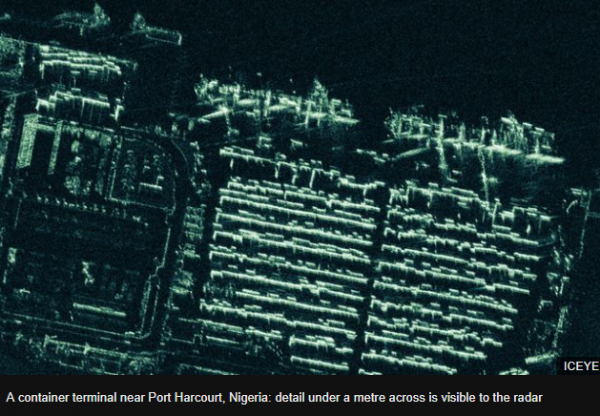
.thumb.png.266f8827dc09e8d11dd84d362b4359c1.png)
.thumb.png.5dc9a18e167d9c3ef256d86450a16c65.png)





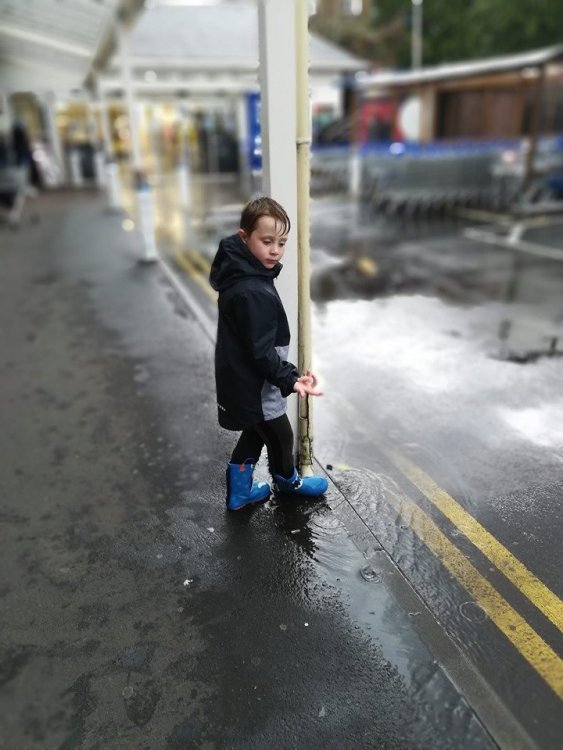



.png.bc39a58329136f587ef9116b287bf45d.png)
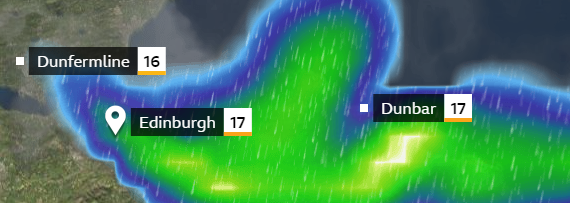

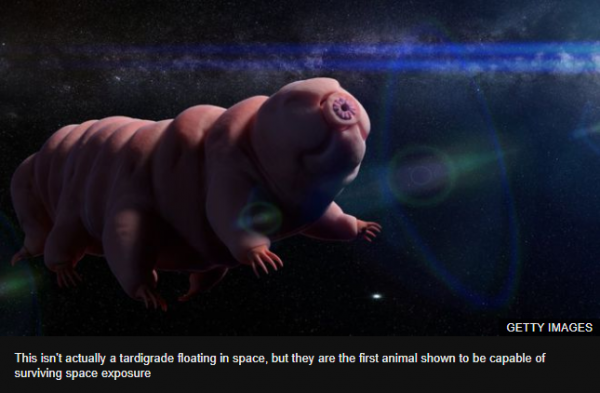
.png.d852ffb882eaeef984d73f904b94f334.png)
.thumb.png.cf129438eff66330945db42ebc801e8d.png)
.thumb.png.fa05a6b55f2b5655478f73ed2fb8d526.png)


.thumb.png.283913e101249dd9eb25b26ec295d652.png)
.thumb.png.161ccb840ff07baf9f5deff1215def2e.png)

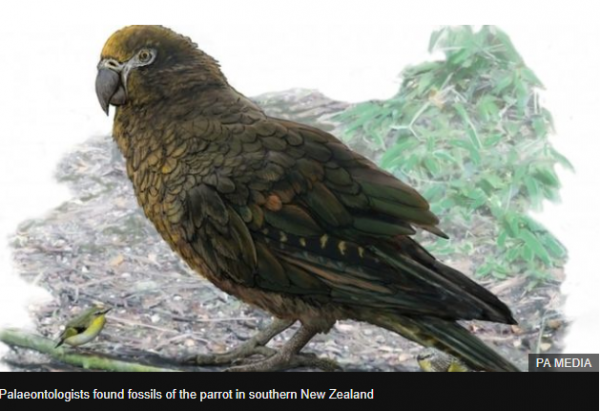
.png.a20f1f709607ef3da4748a9fa89c1ced.png)
.png.ca185c1d60f54bd7f786e093f0b19eb7.png)
